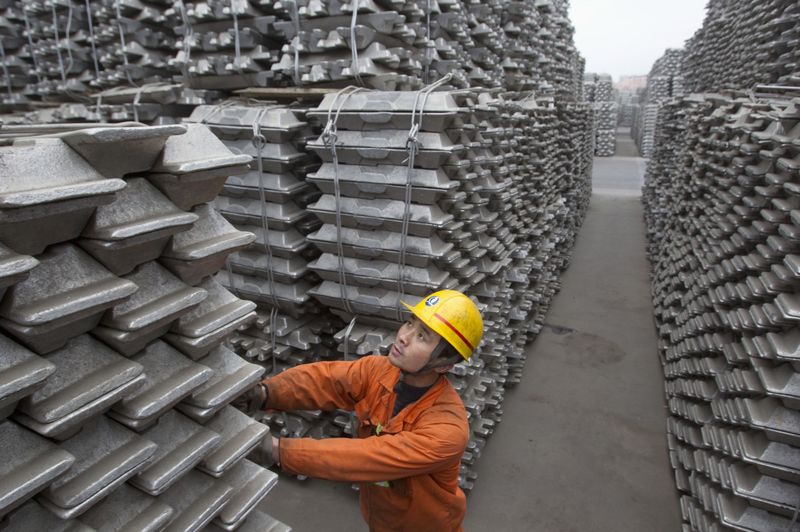(Bloomberg) -- After three weeks of surprises in the aluminum market, the most important question is what happens next in the standoff between Russian billionaire Oleg Deripaska and the U.S government.
Aluminum initially surged as the U.S. sanctions fanned fears of a shortage, and then prices collapsed last week as signs emerged of a possible resolution. Deripaska is trying to negotiate an end to the sanctions, but it’s not clear whether the gambit will be enough.
Here are four scenarios for how the story could play out:
1. Rapid Resolution
The fastest resolution would be for the U.S. to lift sanctions.
Last week, Deripaska offered to reduce his majority stake in En+ Group Plc, the holding company that owns Rusal shares. The U.S. previously said that removing sanctions from Rusal would require divestment and relinquishment of control.”
“If everything is sorted, I would expect to see some downside to LME prices, but not to go back to $2,000,” said Eoin Dinsmore, an analyst at CRU Group in London.
Still, the sanctions have been a wake-up call for the industry, said Xiao Fu, head of global commodities strategy at BOCI Global Commodities U.K. in London. Even if the situation is resolved, European and U.S. aluminum buyers may move away from metal produced by Rusal, she said.
2. Drawn-Out Talks
The most likely outcome is a long negotiation between Deripaska and U.S. officials, said Brian O’Toole, senior fellow at the Atlantic Council who previously worked in the Treasury’s sanctions unit.
"This will take several iterations," he said, pointing to a 2016 sanctions case involving the sale of Panamanian newspapers that took more than a year to resolve.
Under this scenario, shortages would ease in the alumina market, the key raw material to make aluminum, said Dinsmore of CRU. Rusal would likely be allowed to export aluminum, but probably sell less metal than before the sanctions, when it was exporting about 80 percent of output.
"The uncertainty bakes in a higher floor into the LME price," according to Dinsmore.
3. Half-Way House
If the U.S. rejects Deripaska’s proposal, the Russian company may have to pursue other options to survive.
One possibility would be a major restructuring that carves out the international assets and sells them to Western buyers. Plants in Russia might pivot to customers in markets like China, Turkey or India that are less exposed to sanctions.
Earlier this month, Deripaska led a delegation to China in the hopes of finding counterparties to buy aluminum and supply alumina. But finding partners is proving difficult.
“It seems the Chinese don’t want to get involved in this politically,” said Vivienne Lloyd, a metals analyst at Macquarie Group Ltd. in London. “One of things that makes these sanctions so effective is that Rusal can’t easily go running to China for help, since the country already runs a heavy aluminum surplus.”
Without such an alliance, it’s more likely that Rusal would have to reduce output. Prices could trade between $2,200 and $3,000 in such a scenario, depending on the severity of the production cuts, according to CRU’s Dinsmore.
4. No Fix
If talks break down and the Russian billionaire remains determined not to abandon his company, the aluminum industry should brace for a surge in prices and anticipate Rusal’s exit from international markets.
Aluminum could return to levels above $2,700 a ton if the sanctions aren’t lifted before October, BOCI’s Fu said.
Prices could hit $3,000 in such a scenario, but at some point Chinese suppliers will start shipping metal to the international market, helping to take the steam out of the rally, Dinsmore said.
